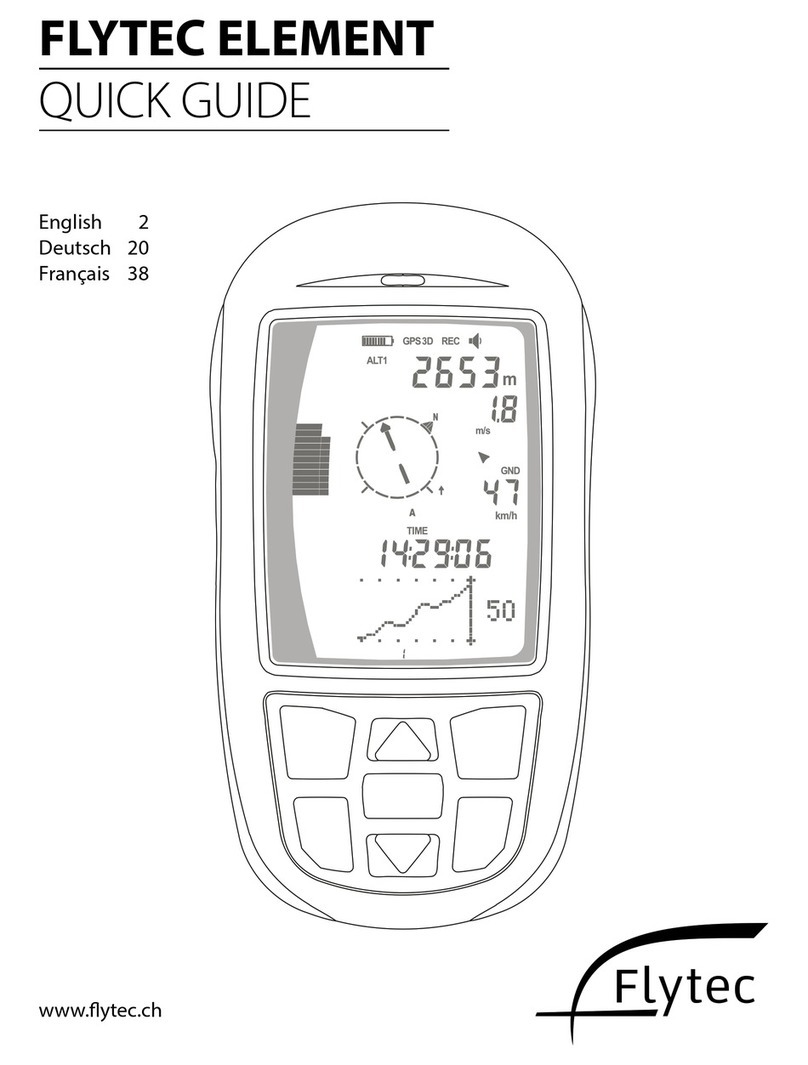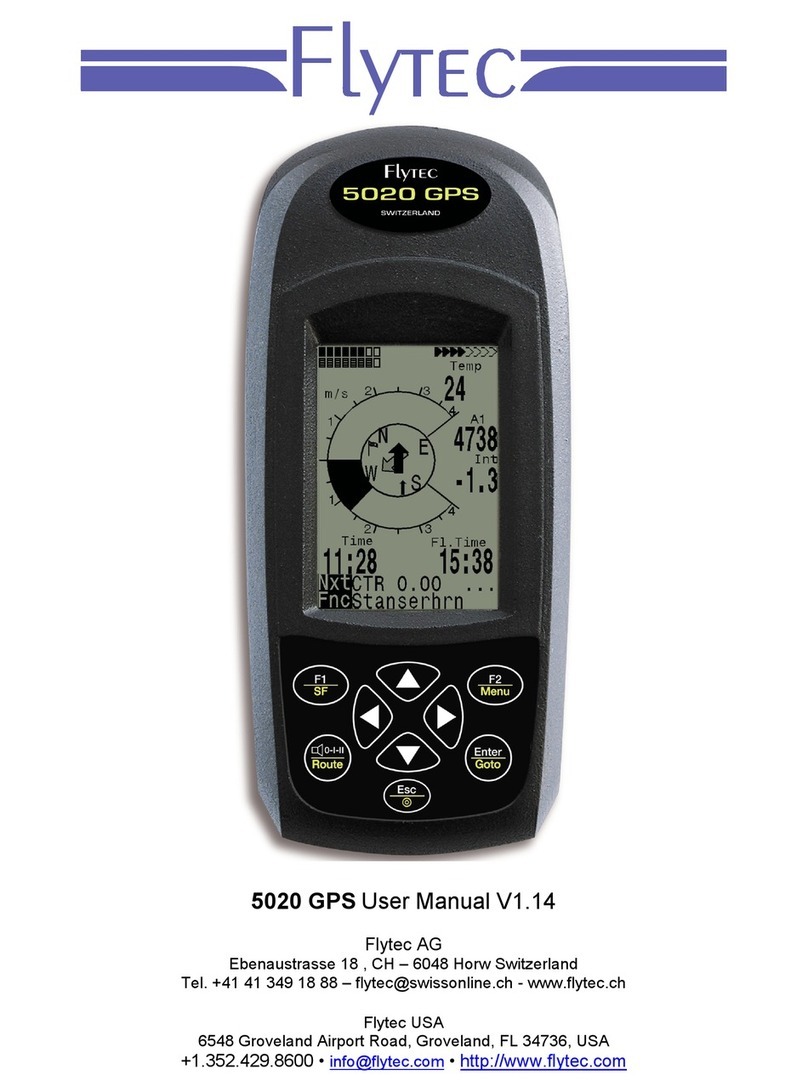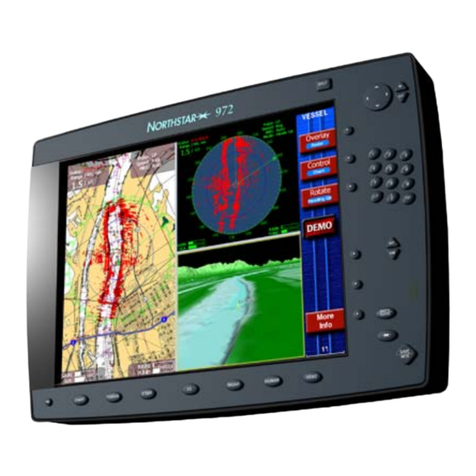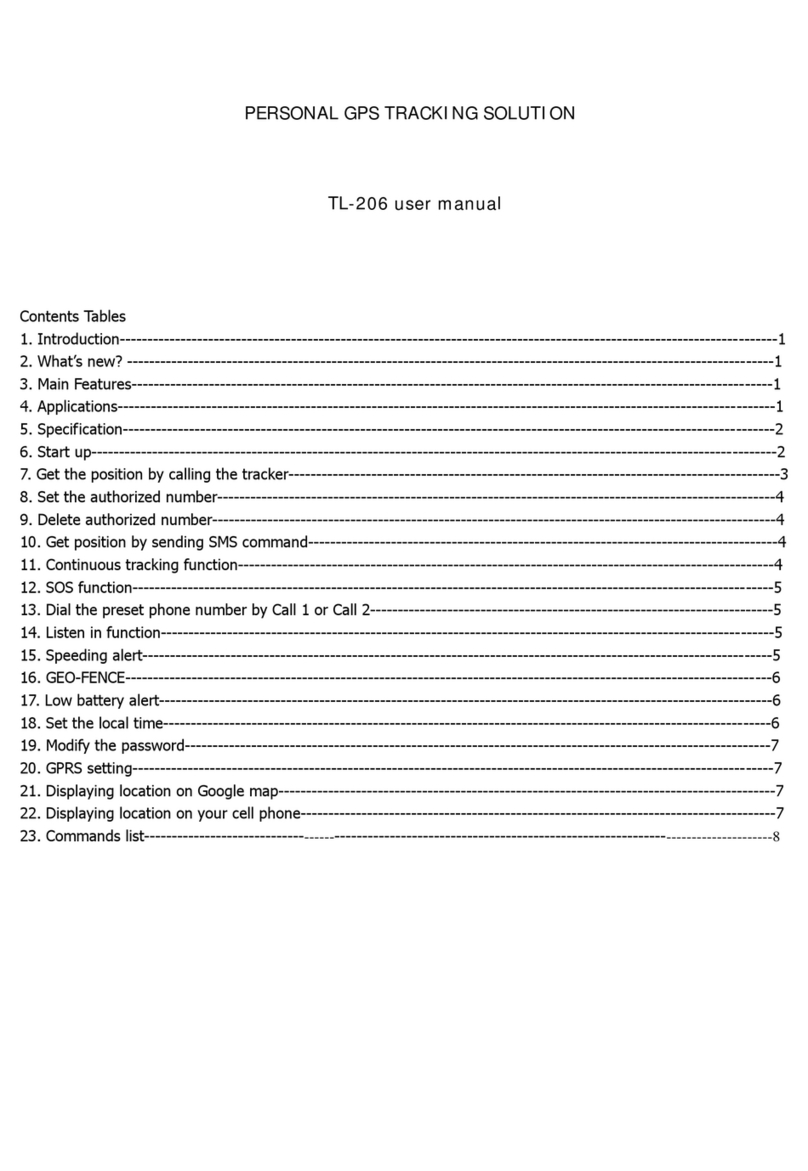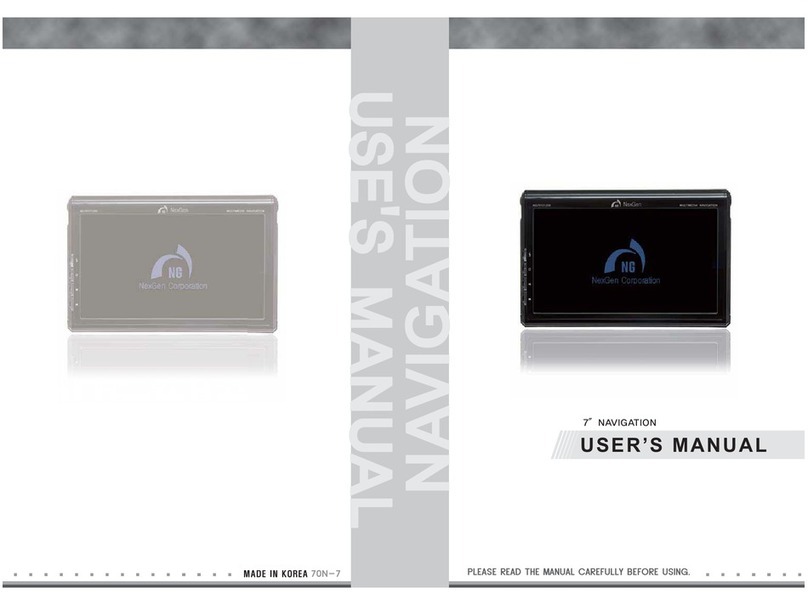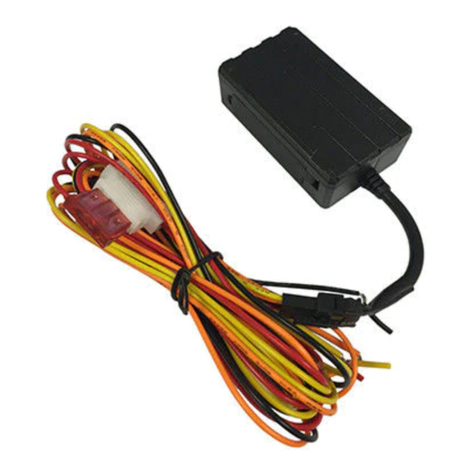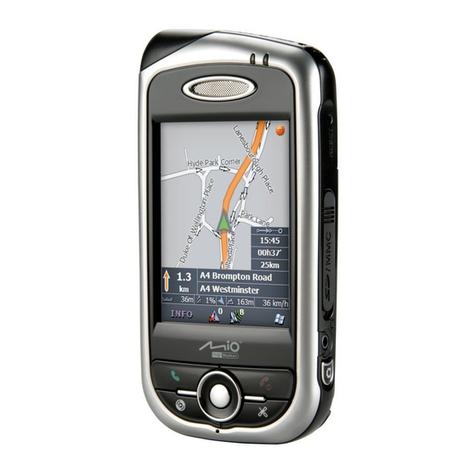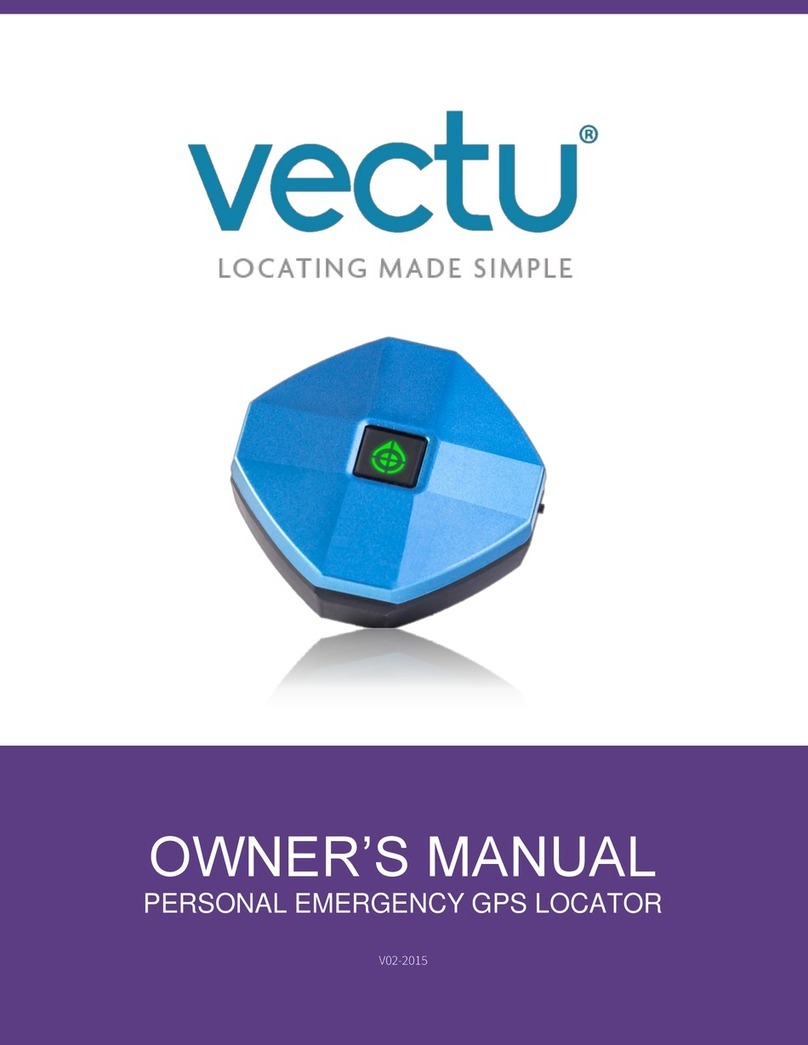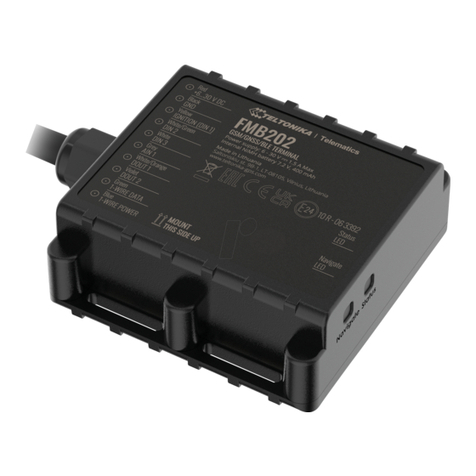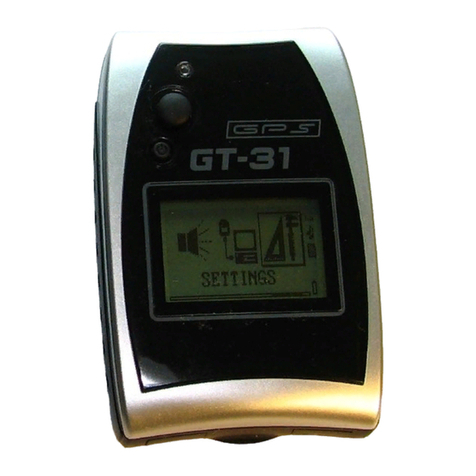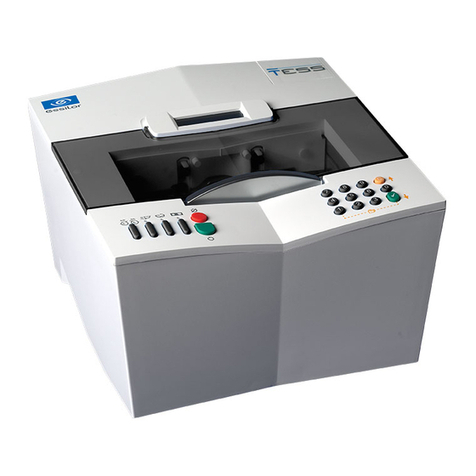Flytec 6020 User manual

Operating Manual Flytec 6020
- 1 -
6020 GPS Operation Manual Vers.3.05
Flytec AG
Ebenaustrasse 18 , CH – 6048 Horw Switzerland

Operating Manual Flytec 6020
- 2 -
Table of Contents
1Table of Contents............................................................................................................................ 4
1.1 The Instrument ..................................................................................................................................... 4
1.2 Switching ON and OFF the 6020-GPS ................................................................................................. 5
1.3 Keyboard and summary of display screen............................................................................................ 5
1.4 First steps............................................................................................................................................. 9
1.4.1 Prior to the first flight .............................................................................................................................................9
1.4.2 At take-off starting point ........................................................................................................................................9
1.4.3 For what do I have to pay attention during the flight? ...........................................................................................9
1.4.4 Data analysis after the flight ..................................................................................................................................9
1.5 User defined fields.............................................................................................................................. 10
1.6 Entering Text ...................................................................................................................................... 10
1.7 Menu Sequence ................................................................................................................................. 11
2Display Screens ............................................................................................................................ 12
2.1 Altimeter and air pressure .................................................................................................................. 12
2.1.1 Altimeter A1, absolute Altitude ............................................................................................................................12
2.1.2 Altimeter A2, relative altitude...............................................................................................................................13
2.1.3 Altimeter A3, cumulated altitude..........................................................................................................................13
2.2 Variometer functions........................................................................................................................... 14
2.2.1 Analog Vario........................................................................................................................................................14
2.2.2 Digital-Vario Average- or Netto-Vario..............................................................................................................14
2.2.3 Acoustics and Volume Level (Sound) .................................................................................................................15
2.3 Speed ................................................................................................................................................. 17
2.3.1 Speed without Speed Sensor..............................................................................................................................17
2.3.2 Stallalarm.............................................................................................................................................................17
2.4 Time of day and Date ......................................................................................................................... 17
2.5 Temperature....................................................................................................................................... 18
2.6 Navigation .......................................................................................................................................... 18
2.6.1 Assessment of reception quality..........................................................................................................................18
2.6.2 Compass and Flight Direction .............................................................................................................................19
2.6.3 Track und Bearing ...............................................................................................................................................19
2.6.4 Waypoints and coordinates .................................................................................................................................20
2.6.5 Flying Routes.......................................................................................................................................................23
2.6.6 The Competition-Route .......................................................................................................................................24
2.6.7 Diff. BGGoal ........................................................................................................................................................28
2.6.8 Relocating Thermals............................................................................................................................................29
2.6.9 XT Error, Crosstrack Error................................................................................................................................29
2.6.10 Air Space - CTR (Restricted areas).....................................................................................................................29
2.7 Flight optimisation............................................................................................................................... 31
2.7.1 Groundspeed (Speed over ground).....................................................................................................................31
2.7.2 Head- Cross or Tailwind; the Wind component...................................................................................................31
2.7.3 Wind direction and Wind speed...........................................................................................................................31
2.7.4 Glide ratio ( = L/D ratio) ......................................................................................................................................32
2.7.5 Safety altitude over the path of best Glide – Diff.BGWayp and Diff.BGGoal ......................................................32
2.7.6 Display screen final approach .............................................................................................................................33
2.8 Battery - Management ........................................................................................................................ 35
3The Setting Menus........................................................................................................................ 36
3.1 User Settings...................................................................................................................................... 36
3.2 Memory Management......................................................................................................................... 37
3.3 Instrument Settings............................................................................................................................. 37
3.4 Specific Instrument factory settings .................................................................................................... 38
4Flight Memory and data analysis .................................................................................................. 38
4.1 Flight-Memory and Flight-Analysis ..................................................................................................... 38
4.1.1 Logbook and Flight Analysis page ......................................................................................................................40
4.1.2 Graphic Display of flights in Map format..............................................................................................................40
4.2 Data transfer....................................................................................................................................... 41
4.3 Data exchange via PC........................................................................................................................ 41
4.3.1 Fightinstrument Option ........................................................................................................................................42
4.3.2 Waypoints and Routes ........................................................................................................................................42
4.3.3 Airspace (CTR)....................................................................................................................................................42
4.4 Transferring new software to the 6020-GPS ...................................................................................... 42
5Miscellaneous ............................................................................................................................... 43
5.1 Optional Software (additional Software) ............................................................................................. 43
6Simulation ..................................................................................................................................... 44
7Disclaimer of Warranty: ................................................................................................................ 44
7.1 Landing in Water ................................................................................................................................ 45
8Technical Data .............................................................................................................................. 45
9Appendix ....................................................................................................................................... 46
9.1 Altimeter ............................................................................................................................................. 46
9.2 Speed ................................................................................................................................................. 46
9.2.1 True or Indicated Airspeed - TAS or IAS.........................................................................................................46

Operating Manual Flytec 6020
- 3 -
9.2.2 Stall alarm............................................................................................................................................................47
9.3 Navigation .......................................................................................................................................... 48
9.3.1 Reception quality of GPS ....................................................................................................................................48
9.3.2 Accuracy of GPS altitude ....................................................................................................................................48
9.4 Flight optimisation............................................................................................................................... 51
9.4.1 Final glide calculation ..........................................................................................................................................51
9.4.2 Safety altitude (Alt a. BG)...................................................................................................................................52
9.4.3 Final Glide calculation over several Waypoints...................................................................................................52
9.5 Flight Memory and IGC File................................................................................................................ 53
9.5.1 Content of IGC Files ............................................................................................................................................53
9.5.2 New Regulations for Record flights or decentralised Competitions (OLC)..........................................................54
9.5.3 Evidence of flights - Safety against Manipulation................................................................................................55
9.5.4 Digital Signature and OLC- Registration .............................................................................................................55

Operating Manual Flytec 6020
- 4 -
1 Table of Contents
1.1 The Instrument
jack for
Windspeed -
sensor
Not used on 6020
(charge socket 6030)
SD card slot for
future applications
safety cord
cover right side

Operating Manual Flytec 6020
- 5 -
1.2 Switching ON and OFF the 6020-GPS
The instrument is switched-on by pressing the Page/ESC
On/Off key. In order to avoid unintentional
switching-on, it is necessary upon display prompt „switch on ?? Press Ok“ to confirm
by pressing the OK key. For switch-off the same key needs to be pressed for about
3 seconds and the display prompt "switch off?? Press OK " is to be confirmed by pressing
the OK key.
1.3 Keyboard and summary of display screen.
Main Setup Menu
===============
Flightmemory
Waypoints
Routes
Restricted Areas
Simulation
Basic Settings
================↓
0%
25%
50%
75%
100%
Select
function of
user fields
Auswahl der Seite
Function key 1
altitude Alt1
Marker during recording
select user
field
Function key 2
altitude Alt 2
Sinkalarm On/Off
selection of Route
no function (only 6030)
selection Waypoint in Route
confirmation
menu
Info (coordinates)
Manual Head/Tailwind
Volume
selection next
Waypoint
Auswahl Display/Abbruch
Einschalten/Ausschalten
short press.
long press.
2
3
WP1
BEAR
0.9km
345

Operating Manual Flytec 6020
- 6 -
Note for switch-off: after completion of a flight the calculation of the digital signature can
take up to 2 min. Please wait until the display prompt „Generating Digital Signature“
disappears and then press again the Page/ESC
On/Off key.
Main Display Screen
Charge state of battery 1
and battery 2
Number of Satellites
received by GPS
User defined field
Digital Variometer
Altitude
User defined field
User defined field
Analogue Variometer
Unit of Variometer-scale
Digital Variometer Mode
Function of F1 key Function of F2 key
Information lines
Direction to next
Waypoint
Wind direction
Direction of last climb
Keine Funktion
Set altitude A1 /
Set Marker in IGC File
(only when Fllight recording is
activated)
Sinktone
On/Off
Selection Routes
Set altitude A2
volume
Menu
confirmation OK
Info key
Display of actual coordinates or of the
next CTR
WP-selection
On/Off -switch
(for "Off" keep pressed during 3 sec.)
1 step return
In Menu
Shifting Display
Main-, Map-, final-
approach screen
Default font = short key pressure
boldface = long key pressure
Arrow key functions in normal mode
Switch-over of
user defined pages
Selection of user defined
fields
Long press.on F1 key Arrow keys F2 key
Alt1/Mrk Alti 1013 Alti 1 ↑↓ Alti GPS
Alt 2 --- Alti 2 ↑↓ Set 0
WP Add Wayp. next↑pr↓wp ---
H/Twind ---
---
HT wind Auto
HT man. ↑↓
HT Man (Wind)
HT Auto (Wind)
Waypoint select.
in one Route
Auto/manuell Head/Tailwind
current page user fields

Operating Manual Flytec 6020
- 7 -
Map Screen
ESC is used to select the Map Mode. It is followed by the illustration of the flight track
(North is located at the top!). Additionally stored waypoints are plotted with a cross and name,
and the scale is indicated in the lower left part.
F2: Zoom in: The map scale is gradually increased, up to approx. 0.5–1.0 km. Thus
single circles are clearly recognisable (dependent on the Recording Interval settings)
F1: Zoom out: The map scale is gradually decreased until the display screen is
optimised.
OK: Return from any display back to optimised display screen.
ESC: Return to flight selection Menu
All other keys cause the track in the current selection to be redrawn.
Arrow keys:
During the flight one can blank out by use of the right arrow key all waypoints not being part
of the Route. When having left the map screen and subsequently switches back, however
all waypoints shall be displayed again.
During the flight the current position is shown in the centre. The screen moves by half when
the current position is getting to the frame, or when one returns to map mode from any other
screen display.
When viewing a flight stored in the flight memory, the displayed frame can be shifted to the
top, to the bottom, or to the right or left. This function is not enabled during flight.
Note:
Each screen layout may take several seconds, depending on the amount of data. The more
track points are already stored in memory, the more time for screen layout is required.
If during screen layout a zoom- or pan key is actuated, then the momentary screen layout
will be cut short and start over again with the new values. Thus the desired graph will be
reached speedily. The track is redrawn back from the current position. This may become
important during long-lasting flights with short recording intervals for screen layout.
Information lines
Function of F1 key Function of F2 key
Digital Variometer Altitude
Scale
Track, flown leg
Waypoint in a
Route with cylinder
Defined Air Space
Waypoint in a
Route with cylinder
Defined Air Space
(not yet available)

Operating Manual Flytec 6020
- 8 -
Final approach screen
The final approach screen serves as an assistance for the final glide. It is less suitable for
the normal flight. It will normally be activated in the last thermal before the goal.
The horizontal scale shows the deviation between current track and bearing (direction to
the goal). 1 graduation line is 10°, between 2 large lines there are 20°. The vertical scale
shows the deviation between the required lift/drag ratio to the goal and the ratio of best
glide of the aircraft, such as it is adjusted in the Basic Settings. One graduation line
corresponds to 0,5 lift/drag ratio. There is one lift/drag ratio between 2 large lines.
The example shows an aircraft with lift/drag ratio 8. The required L/D ratio to goal is 5.7.
The aircraft symbol is positioned by 2.3 units above the point of best glide.
User defined field
User defined fieldUser defined field
Function of F1 key Function of F2 key
Information lines
This line points to goal
(Bearing)
Charge state of battery 1 and
batter
y
2
Number of Satellites
received by GPS
Point of best glide
A
ngle between Track and Bearing
1graduation = 10° example 22°
Deviation between required L/D
to Goal and best glide of the aircraft.
1 graduation = 0.5 glide ratio.
Example best glide 8
Required glide ratio to Goal 5.7
Exit assistance and
Track recommendation
Analogue Vario
Current page

Operating Manual Flytec 6020
- 9 -
1.4 First steps
1.4.1 Prior to the first flight
page
Entry of pilot’s name, type of aircraft and number 10, 11
Selection of recording interval 38
Setting of acoustics 15
Battery check and replacement or repositioning the banks
in case they are discharged 35
Entry of Waypoints 21
Determination of Routes 23, 25
If need be input of CTR’s of flying area 29
Setting User fields of relevant 3 pages. 10
1.4.2 At take-off starting point
Switch-on of the instrument in time to ensure proper GPS reception quality 18
Prior to take-off check if instrument has GPS reception 18
Activate Route, if required entry of starting cylinder and starting time 23
Setting altitude A1 at altitude value of starting point. If altitude is known, this
value should be entered directly. (Highest accuracy). If altitude is set using the
GPS the reception needs to be of proper quality. In case satellite reception
quality is insufficient, difference values in altitude of up to 100 m may occur. 12
1.4.3 For what do I have to pay attention during the flight?
For nothing! Just enjoy the flight and watch not to commit an air space violation.
The instrument shows all important data on the large display screen at any time. 5, 29
The Routes function, the last thermal display and the Wind direction shall
assist you in making the right decision. 23, 29,
Flight recording is triggered automatically, as soon as the difference in height
exceeds 30m within 60s, or if speed over ground exceeds 10 km/h for 60 s. 38
The most important commands during flight are:
ESC key for shifting to map or final approach display screen. 5
If need be, Next Prev WP, in case one is flying a Route and does not want
to follow the initial order. 23
Switch-on or switch-off the sink alarm. 14
Mark an excellent thermal with the WP function „Add WP“ 22
Completion of the flight is detected automatically after landing, or it can be
cancelled by use of the ESC key.
Do not forget switch-off after calculation of the signature. 38
1.4.4 Data analysis after the flight
Switch-on the instrument and connect to the PC with the Mini USB cable.
Caution: at first the USB driver needs to be installed. This is effected
automatically when installing Flychart, otherwise you need to install the driver
which is compatible to your system software from the CD. 42
Select the correct interface on the flight analysis program (possible programs
see chapter data transfer) or have it done by search and then download the
flight from the instrument. Several programs provide direct entry to the OLC
or similar online competitions. Flychart
Download the flights regularly from the instrument to the PC and format the
flight memory with Del. All Records in Menu „Manage Memory“. This way
you are ensured to record successfully your flights at any time. 41

Operating Manual Flytec 6020
- 10 -
1.5 User defined fields
The main screen as well as the final approach screen each show up to 3 pages which
are shifted by use of the ►key. Due to this feature it is possible to display nearly all
the following measuring data in their correct context. The page number is displayed below
the battery charge state as P1…P3.
page
Display remains empty
Time of day Time of day 17
Flight time Flight time since take-off 38
Vario Digital Vario 14
Altitude 1 m Absolute altitude in m 12
Altitude 1 ft Absolute altitude in ft 12
Altitude 2 Reference altitude, can be set to 0 user-defined 13
Altitude Sum Cumulated gained height of the flight 13
FL (ft) Flight level in feet. Not alterable. 12
QNH hPa Air pressure in Hektopascal 12
Gnd Speed Speed over ground * ( = GS) 31
Air Speed Flying speed through the air 17
Wind Speed Wind strenght * 31
Spd-Diff Wind component ( Groundspeed – True Airspeed )* 31
Track Flight direction (course)* 19
Bearing WP Direction to selected waypoint * 19
Dist WP Distance to selected waypoint * 22
Dist Goal Counted up sectors in front of the pilot up to the last WP 28
of a Route *
Dist Start Distance from starting point 28
Dist Cylin Distance to the radius of a Waypoint cylinder in a
Competition-Route 27
Dist Therm Distance to last thermal * 29
L/D Gnd actual Glide Ratio over ground (= Groundspeed/Sink)* 32
L/D Air actual Glide Ratio through the air ( = TAS/Sink) 32
L/D Req required Glide Ratio over ground to reach the WP* 32
Diff. BGWayp Safety height above the path for best Glide * 32
Diff. BGGoal Pre-calculated height at arrival above the last waypoint
of a Route * 28
Temperature Temperature of circuit board 18
* Display only active when GPS receiver is energised.
If no data are changed after selection of a field, the instrument returns to normal mode
after 10 seconds and the previous display is maintained.
1.6 Entering Text
It is possible to enter text for certain fields, as for example pilot’s name, type of aircraft,
aircraft ID, or in regard to Waypoints or Routes the required text on the instrument.
However, this procedure is quite laborious. It is indeed much more easier to implement
the text entry on the PC by use of the program Flychart 4.52 and to transfer subsequently
the data to the instrument.
Text entry on the instrument is demonstrated here for the example of a Waypoint:
by use of the keys ▲and ▼one can select a single Waypoint and alter it after pressing
the OK key.
The 1st letter of the WP name shall be flashing. Now again by use of the ▲and ▼keys
the required letter is selected; numbers, letters as well as a range of special characters are
available.

Operating Manual Flytec 6020
- 11 -
By pressing the ►key the cursor moves to the next letter position etc. By using the F1 key
it is possible to shift between capitals and special characters, or between minuscule
and numbers. By use of the F2 key any figure is deleted (rub out). It is possible to enter
at a maximum 17 figures. When the name has been entered completely, confirm by
pressing the OK key.
1.7 Menu Sequence
page
Flight memory 38
Waypoints 21
Routes 23
Air Space 29
>User Settings
>Variometer
Basic filter 14
Digital Vario Integrator 14
Threshold last Climb 29
>Variometer Acoustics
Acoustics Settings 15
Threshold Sink tone 15
>Speed
Settings Wind vane 17
Stall Speed 17
>Flight Memory
Recording Auto/Man 38
Recording interval 38
Polar Curves 31
Pilot’s name 10
Type of aircraft 10
Aircraft ID 10
>Memory
Delete flights 37
Delete WP and Routes 37
Formatting the memory 37
Delete Air Space data 37
Simulation 44
>Instrument Settings
Display contrast 37
Language 37
Battery type 35
Time zone 17
Units 37
Coordinate format 37
Pressure sensor correction 37
Bluetooth
SMS
>Optional Software 43
>Factory settings 38

Operating Manual Flytec 6020
- 12 -
2 Display Screens
2.1 Altimeter and air pressure
A barometric altimeter calculates altitude from the present air pressure of the atmosphere.
Air pressure will decrease at increasing height. Due to the fact that air may be compressed,
the pressure decrease is not linear, but indeed exponential. The basis for altitude calculation
in aviation is an international formula which defines a standard atmosphere.
In the CINA- Standard atmosphere the basic pressure on sea level is 1013,25 hPa
(Hektopascal) at a temperature of 15°C. Furthermore it defines a continuous temperature
decrease at increasing height of 0,65°C per 100m ascent. Therefore is binding: a barometric
aviation altimeter displays the precise altitude only if weather conditions are in exact
accordance to the standard atmosphere. In practice, such analogy is more likely to be the
exception!
Air weight and pressure are strongly influenced by air temperature. If temperature deviates
from standard atmosphere, the display of altitude calculated as per the international formula
is no longer correct. The altimeter displays during summer, when temperatures are higher,
indeed altitude parameters which are too low, and during the winter it is exactly the contrary!
Flying at lower temperatures is effectively done at lower altitude, and at higher temperatures
flight altitude is higher than the altimeter displays! The deviation of 1 °C per 1000 height
meters induces approx. 4 m error. (This empirical formula is valid for up to 4000m!)
If you fly during summer through 2000 height meters in an air mass being too warm by 16 °C
compared to standard atmosphere, the altimeter will then display 2 x 4 x 16 = 128m
difference in altitude under real height! Based upon the internationally determined altitude
calculation with standard values, this display error caused by air temperature shall not be
rectified by the instrument.
Air pressure changes in relation to weather conditions. In order to compensate for display
fluctuations, an altimeter always needs to be gauged. This means that the altimeter has to
be set precisely before take-off for any flight to a well-known altitude value. Caution:
the atmospheric pressure may change during the timeline of one day up to five Hektopascal
(for ex. cold front). As a result this is after all the equivalent of more than 40 meters height
difference.
There is another possibility to gauge the altimeter which is to enter the current QNH pressure
value. The QNH (Question Normal Height) applied in aviation matches the current local
air pressure, as it would be at sea level, so that the altimeter would indeed display 0m.
Due to this process the local pressure data recorded by the various measurement stations
is area-wide comparable, irrespective of the geographical height.
The QNH-value is subject to be continuously updated and may be read in the flight weather
report, or required by radio from airfields, or by enquiry on the Internet.
The instrument provides 3 altitude displays.
2.1.1 Altimeter A1, absolute Altitude
A1 is always the altitude above sea level (large display in upper part of display screen).
Altitude A1 is originally set by the manufacturer to show the correct altitude of user’s
location if air pressure at sea level is 1013 hPa. Bearing in mind that this only happens
infrequently, the displayed altitude A1 should be gauged before each take-off to the actual,
true height at location.
Correction of altitude A1:
Long pressure on F1 ⇒will generate the message Mod Alt1 ↑↓ in the lower information line.

Operating Manual Flytec 6020
- 13 -
Pressing the ▲key will increase the displayed altitude, the ▼key will decrease altitude.
Due to this adjustment the air pressure display will also change. This air pressure value
(QNH) is always related to the height at sea level.
If the user does not know the altitude of his present location, he may obtain the data
by fading in the „User Field QNH“ and, using the arrow keys, by changing the altitude
value until the QNH matches the actual QNH as per weather forecast.
If the GPS system receives satellites, the GPS-altitude is applied as Alt1 by pressing the
F2 (Alti GPS) key. If there is no GPS reception, it is possible to set the altitude Alt1
by use of the function key F1 (Alti 1013) to a value which complies to QNH pressure
of 1013 hPa.
If the altitude A1 of any given landing place is set to 0m, then after take-off there will
of course always be displayed the altitude above this location. The related air pressure
(QFE) is the real present air pressure at this place in hPa, which differs of course from
QNH, which is the pressure at sea level, according to the difference of altitude.
Within the user selectable fields it is also possible to choose altitude A1 in ft. This
information is important when being in contact with the air traffic manager in
Restricted Areas.
Furthermore it is possible to choose FL (ft) in the user selectable fields. This value is an
altitude display in feet for the Flight level (FL). This feature is not adjustable and is always
related to a QNH value of 1013 hPa (air pressure at sea level). This display is particularly
important for pilots of microlight aircraft to whom is assigned a Flight Level by air traffic-
controllers during flights in Restricted Areas.
2.1.2 Altimeter A2, relative altitude
A2 (within the user selectable fields) is a reference altitude, it can be modified by use of the
arrow keys ▲▼.
Correction of altitude A2:
Long pressure on F2 ⇒will generate the message „Mod A2 ↑↓“ in the lower information line.
By use of the arrow ▲▼ keys it is possible to set the height difference, or to set with brief
pressure on F2 (SET 0) the height difference to 0.
2.1.3 Altimeter A3, cumulated altitude
A3 (within the user selectable fields) sums up the total height meters gained during one
flight. For thermal flights this height is dependant on flight time. If several pilots complete
the same flight task, then the one who had the least gain in height (A3) would have been
the best to accomplish the task.
A2, A3, FL or QNH can be selected within the user selectable fields.
(see page 10).

Operating Manual Flytec 6020
- 14 -
2.2 Variometer functions
2.2.1 Analog Vario
The most important indication for a non-motor driven
aircraft is without any doubt the Variometer.
It displays the vertical speed in meter/second and informs
the pilot about the actual climb or sink rate.
It is only possible for the pilot by using the Vario (and its
accompanying acoustics) to determine the most efficient
thermal climb, and in the opposite situation, to recognise
when he is sinking too rapidly in downwind and should
leave them at best speed.
The scale of the analogue display is 0,2 m/s. The range of
the first scale extends from 0 up to +/- 4 m/s, thereafter the
scale display switches automatically and the range of the
second scale extends from 4… 8 m/s.
.
The response characteristics of the analogue Vario and of climb
acoustics can be set within a wide range. In order to simplify
the settings, Flytec has determined 5 basic filters which can be
set by the Flychart program to particular requirements when
using a special command.
Setting of basic filter:
Main Setup Menu
⇒
User Settings
⇒
Variometer
⇒
Basic filter..
The following chart is presented for information purpose only to
pilots who have already flown with the 5020 instrument, in order to
facilitate comparison with the previous values.
.
Filter
No.
Filter 1 (Pre-filter)
Number Samples
(Sample rate 0.2s)
Filter 2 (Vario
filter)
0
Default
Default: Corresponds to previous
setting 5020
2 Samples 1.2s
1 Previous setting, high filtration 5 Samples 1.2s
2 Highly filtered 8 Samples 1.8s
3 Minimally filtered
(Air very quiet, Table,)
5 Samples 0.8s
4 New constantly at Vario 0 3 Samples 0.6s
2.2.2 Digital-Vario Average- or Netto-Vario
The Digital Vario has a scale of 10 cm/s and an extensive measuring range of
up to +/- 100 m/s. It is therefore also appropriate to display the vertical speed for parachutists
during the jump.
It may be provided with a time constant from 1 … 30 s in the Set-Mode under "Variomode"
as average value-Vario (also called integrating Vario). This feature is useful to provide a
more settled Vario display inside a rough thermal. Integration time should be selected more
longer in accordance to the thermal’s roughness.
8
76
5
5
67
8

Operating Manual Flytec 6020
- 15 -
2.2.3 Acoustics and Volume Level (Sound)
The Menu Climb acoustics facilitates the versatile setting possibilities of the Flytec 6020 GPS
Vario – Acoustics. This feature enables a rapid and easy adaptation to the pilot’s requirements.
By short pressure on the key the volume level will increase each time by 25%.
The adjustable sound levels are: 0 - 25% - 50% - 75% - 100% - 0. The selected value
is displayed on the information line and confirmed with a short beep or double-beep.
Automatic volume control: with the basic setting levels 25 50 and 75 % the volume level
will be slowly increased automatically, once the airspeed exceeds 40 km/h. However, it is
impossible for the volume level to exceed 100%.
Following settings are possible in the Setup-Menu under User Settings
⇒
Vario Acoustics
⇒
Acoustics settings.
The climb tone is a frequency modulated beep tone whose pitch and beep tone sequence
increase rhythmically at increasing climb rate. The pulse/pause ratio is 1:1.
Asc, F
Basic Tone pitch is the frequency audible at starting climb tone.
Mod.
Increase Tone pitch the interrelation may be seen on graphic below.
SinkF
Basic Tone pitch Tone pitch at starting Sink tone. The Sink tone is continuous
and is heard with deeper sound pitch at increasing sink speed
and is slowly increasing in frequency when approaching rising
air. The basic tone pitch of sink acoustics may only be set
equally to the basic tone pitch for climb acoustics.
The Sink tone may be switched-off by briefly pressing the key,
and can also be switched-on again; then the analog Vario display
would show the relevant threshold. Starting point of sink tone is
set Main Setup Menu
⇒
User Settings
⇒
Vario Acoustics
⇒
Sink tone threshold
.
500
1'000
1'500
2'000
2'500
3'000
0
2
4
6810 12
14
The tone increases rapidly, even at
little Vario increase.
Setting = 9
Basic tone pitch 500Hz
Basic tone pitch 1000Hz The tone increases only slowly, even
at high Vario increase.
Setting = 2

Operating Manual Flytec 6020
- 16 -
damp
Dampening The Variometer value is recalculated every 0.2s. In case of
rapid Vario changes and setting of quickly increasing tone pitch,
this may possibly result between two calculation phases in a
quite important modification of tone frequency. The ear perceives
this incidence as a kind of fast “piano effect”. In order to diminish this
effect, a damping feature may be fitted. Then rapid tone pitches are
honed in the frequency. As a result, the Vario sound has a smoother
response.
Pit.
Beep intervall See graphic
0 2 4 6 8 10 12 14
5
10
15
20
25
30
Vario
Main Setup Menu
⇒
User Settings
⇒
Vario-Acoustics
⇒
Sink tone threshold .
The Sink tone is continuous and is heard with deeper sound pitch at increasing sink speed
and is slowly again increasing in frequency when approaching rising air.
Starting point The starting point of sink acoustics can be selected just as in
climb acoustics. The threshold can be set by use of the ST
arrow keys.
During flight the Sink tone can be switched-on or switched-off
by short pressure on the key. Then one can see upon
switch-on the selected starting point in the analogue Vario
scale. Switch-off is just confirmed by a short beep of the key.
Main Setup Menu
⇒
User Settings
⇒
Vario-Acoustics
⇒
Vario Climb threshold
Starting point In order to avoid the climb acoustics get started with immobile
aircraft, for ex. at take-off area, or at only slight climb, the climb
acoustics starting point can be set in the range from 0 cm/s up to
20 cm/s. Depending on the selected filter type, when climbing,
the Vario shall now activate vigorously or slowly
beep tone short interval=7
beep tone long interval =1
number
beep tones
p
er second

Operating Manual Flytec 6020
- 17 -
Main Setup Menu
⇒
User Settings
⇒
Variometer
⇒
Basic filter .
Filter type Depending on the condition, if the air is quiet or turbulent,
one can select 5 different filters. See „Analog Vario“ page 14.
The warning sound for Stall alarm is a pitch tone of medium height with a very fast interval
rate and always at full volume level of 100%.
All sound effects described here above may be heard in simulation mode.
2.3 Speed
The 6020-GPS provides a speed measuring inlet for a wind wheel sensor. This item displays
the true flight speed through the air and starts correct measuring above 1 km/h, it is
therefore also very convenient for determination of the wind strength at take-off. The
speed measuring inlet can be adjusted by implementing a correction factor.
Factory setting is always 100%.
Main Setup Menu
⇒
User Settings
⇒
Speed
⇒
Settings Wind Wheel.
This correction is helpful, if the speed sensor can not be fitted at optimum.
The wind vane sensor measures the True Air Speed (=TAS).
Speed is displayed in digital mode.
2.3.1 Speed without Speed Sensor
Frequently hangglider pilots fly without any speed sensor. In this case it is possible
to present the GND-Speed as digital display within a freely selectable user field.
The 6020-GPS calculates from GND-Speed, as well as wind direction and strength
a computed air speed. However, this indication of air speed without speed sensor is
just an approximation to the effective air speed. This is in many cases sufficient to do
certain assessments, e.g. if the goal can be reached or not. The data of wind direction
and strength are established in this case by flying one or more circles. The instrument
computes wind direction and strength from the disparity. It is recommended to pilot’s
flying without speed sensor to fly from time to time an entire full circle in order to
establish wind direction and strength. Due to the fact that the calculated air speed is
related to the wind data present at the location where circling was effected, the calculated
air speed is no longer valid under different conditions of wind data.
The air speed calculated without speed sensor is the True Air Speed.
See Chapter 2.7.3 Wind direction and strength page 31.
2.3.2 Stallalarm
This audible alarm is consisting of a deep tone with short beeps and always with 100%
volume level. In Main Setup Menu
⇒
User Settings
⇒
Speed
⇒
Stall speed it is possible to
set the speed for activating the stall alarm, and likewise, the altitude can be set to the point
from where up the alarm is active. If the stall alarm is set to the value of 0 km/h, the alarm is
turned off.
Stallalarm is only enabled when wind vane wheel is inserted. Furthermore, it is only enabled
between 15 km/h True Air Speed and the selected Stall speed.
2.4 Time of day and Date
Caution: time of day and the date do not need to be adjusted. They are taken automatically
from the GPS-Receiver. However, any time zone difference from UTC (World Time) needs
to be entered with a positive value if the time zone is located East of Greenwich, or a with a

Operating Manual Flytec 6020
- 18 -
negative value, if it is at the West. Time zones with 0.5h UTC Offset are also adjustable.
These settings are effected in Main Setup Menu
⇒
Instr. Settings.
⇒
Time zone
Notice: all internal calculations of the instrument are made in UTC (Coordinated Universal
Time). The local time is just used as „Time“ display and calculates simply the UTC plus or
minus the UTC Offset.
The local time is also binding for the take-off time at Competition Routes.
2.5 Temperature
The instrument Flytec 6020-GPS needs a temperature sensor for the temperature
compensation of sensors, as well as for the automatic display contrast control.
Temperature reading is possible in degree Centigrade or Fahrenheit.
Main Setup Menu
⇒
Instr. Settings
⇒
Units.
Caution: the sensor measures the circuit board temperature. The inside temperature of the
casing may be higher or lower than the ambient air temperature, especially when the
instrument is exposed to direct sunlight.
2.6 Navigation
Navigation activities without operating GPS-Receivers is unthinkable these days.
Indeed a chain of satellites is orbiting the Globe. It provides the possibility to determine
worldwide one’s own position very precisely, if min. 4 satellites are received simultaneously.
The Flytec 6020-GPS computes various indicators via the positioning feature by GPS.
2.6.1 Assessment of reception quality
The 6020-GPS is fitted with a 16-channel GPS-Receiver which is featured with
lesser power consumption and also a significantly shorter satellite detection time.
Accuracy of position is between 7 to 40m. As an average one may assume approx. 20 m.
Normally the instrument recognises its position under unobstructed view conditons after
maximum 1 to 2 minutes. If the receiver is switched-off for a short time (less than 2 hrs.),
the time for new position finding is less than 10 seconds as a rule. Buildings, mountains or
thick forest affect reception quality of the receiver. Therefore, one should always look for the
best possible visibility around and the antenna in the casing should be pointed upwards if
applicable. In particular when mounted on the steering holder of the hangglider,
we recommend not to have the instrument fixed under the pilot’s head on the middle of
the basis, but indeed sideways. In this position the 6020-GPS should not have more than 45°
deviation from horizontal position so that the antenna points upwards.

Operating Manual Flytec 6020
- 19 -
Because the receiving intensity of the satellite signals is only approx. 1/1000 of mobile
radios, any radio equipment and other disruptive factors (like notebooks) should be operated
as far away as possible from the 6020-GPS.
The number of received satellites is shown on the upper right side of the bar scale.
The longer the bar, the more precise is the reception quality.
As soon as the instrument has sufficient GPS reception after energising, the date and time
of day is recorded into the internal memory. This action is signalled by the instrument with a
slight beep tone.
2.6.2 Compass and Flight Direction
In contrast to a normal magnetic compass which is oriented to the magnetic force lines of
the Globe, the GPS compass can show the direction only when the user moves about.
However, it has the advantage that it is not subject to any grid deviation and does not show
any deviation as a result of iron or any magnetic material either. Its zero point always
corresponds with the true geographic north (=0 or 360 degrees).
The course, that is the flight direction (= Track), is calculated from a series of positions. If the
user remains stationary at the same location, then the course and compass needles are
undefined. The exact course (this is the direction in which the user travels over ground), is
always at the top of the compass, but can also be read in the display “Track”. When circling
in a thermal the compass rose only appears to turn; in reality the needle does not move; it’s
the casing along with the aircraft, which moves around the rose.
2.6.3 Track und Bearing
The Track is defined as the direction of movements of the aircraft over ground.
The geographic true North is always 0 or 360 degrees (East = 90, South = 180, West = 270
degrees).
As the bearing is designated the direction (according to the system described above) to a
selected waypoint seen from the viewer.

Operating Manual Flytec 6020
- 20 -
Caution: Track or Tracklog is also called the sequence of recorded positions during one
flight.
2.6.4 Waypoints and coordinates
A waypoint is any single point on the earth’s surface that you would like to go to.
The 6020-GPS can save up to 200 different waypoints. Each waypoint can have up
to 16 characters, e.g. “Fiesch Airfield”. In determining the waypoint, it is also necessary
to enter the altitude, i.e. “1123” meters (always above sea level). We now only need the
positioning of waypoint on the earth’s surface. For this purpose the 6020-GPS utilises the
geographical map system named WGS84 (World Geodetic System 1984).
This reference system assumes that latitude is measured from the equator to the North Pole
with 90° N, and to the South Pole with 90° S. Longitude is measured from the Greenwich
zero meridian (near London), East is counted positive and West is negative, up to +/- 180°.
The 6020-GPS also understands waypoints entered according to the previous norm,
introduced by Bräuniger: 3 letters and 3 numbers. Example: FIE112 indicates a waypoint
with the name FIExxx and an altitude of 1120 meters above sea level.
In Basic Settings / Coordinate Format the data entry format is selectable between:
1) Degrees Minutes Decimal places of Minutes (dd°mm.mmm) (Factory setting)
2) Degrees Minutes Seconds (dd°mm’ss“)
3) Degrees Decimal places of degrees (dd.ddddd)
4) UTM (a grid system with 1 km raster in both NS and also in EW direction)
5) Swiss Grid
Basically one should always select the first possibility (=factory setting), because only this
format is using exactly the same calculation format as the GPS receivers do. With all the
other formats rounding errors could sum up to 20 m.
Computing is only done with the WGS84 system. Differing geodetic systems can no longer
be selected.
NORTH
WPT1
WPT2
Speed
Distance
Bearing
Track
Course
erro
r
Crosstrack
erro
r
Course
DTK
Table of contents
Other Flytec GPS manuals

Flytec
Flytec 5020 User manual
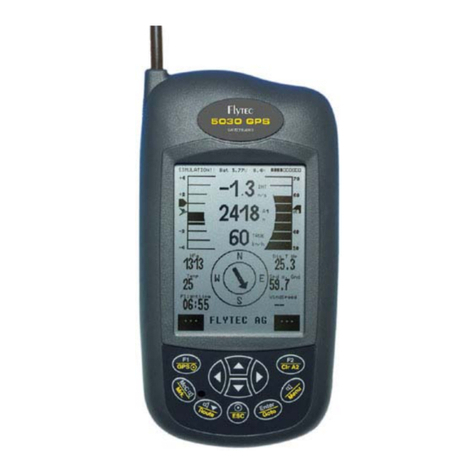
Flytec
Flytec 5030 GPS User manual
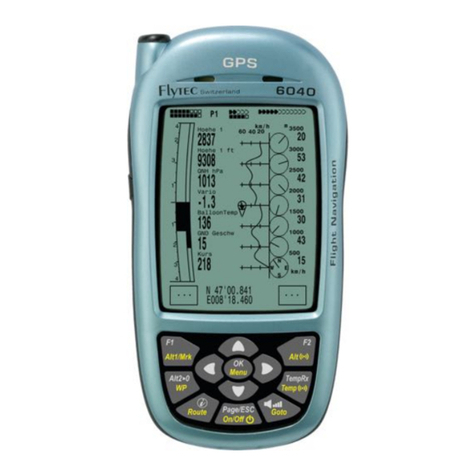
Flytec
Flytec 6040 User manual
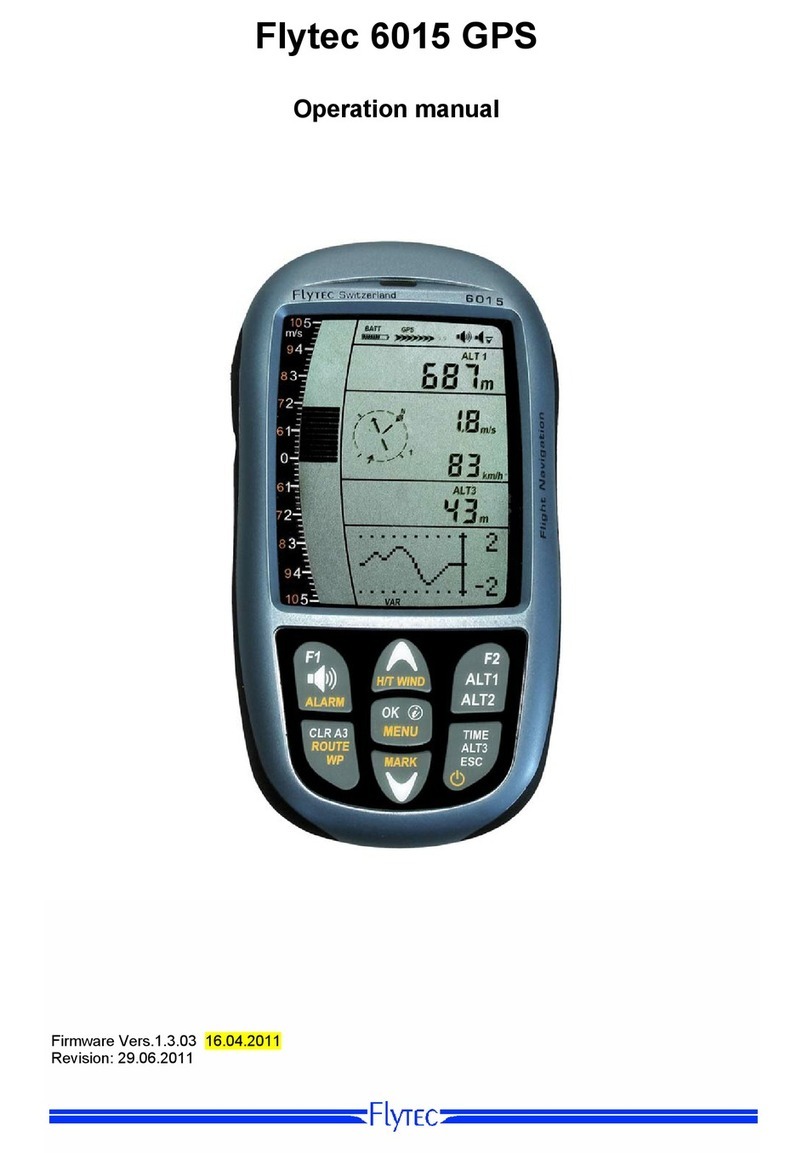
Flytec
Flytec 6015 User manual

Flytec
Flytec 5030 GPS User manual

Flytec
Flytec 6040 User manual
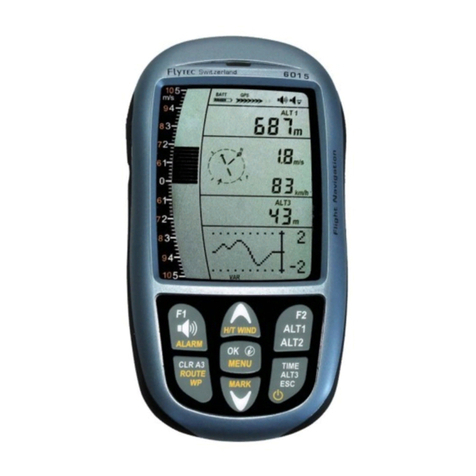
Flytec
Flytec 6015 User manual
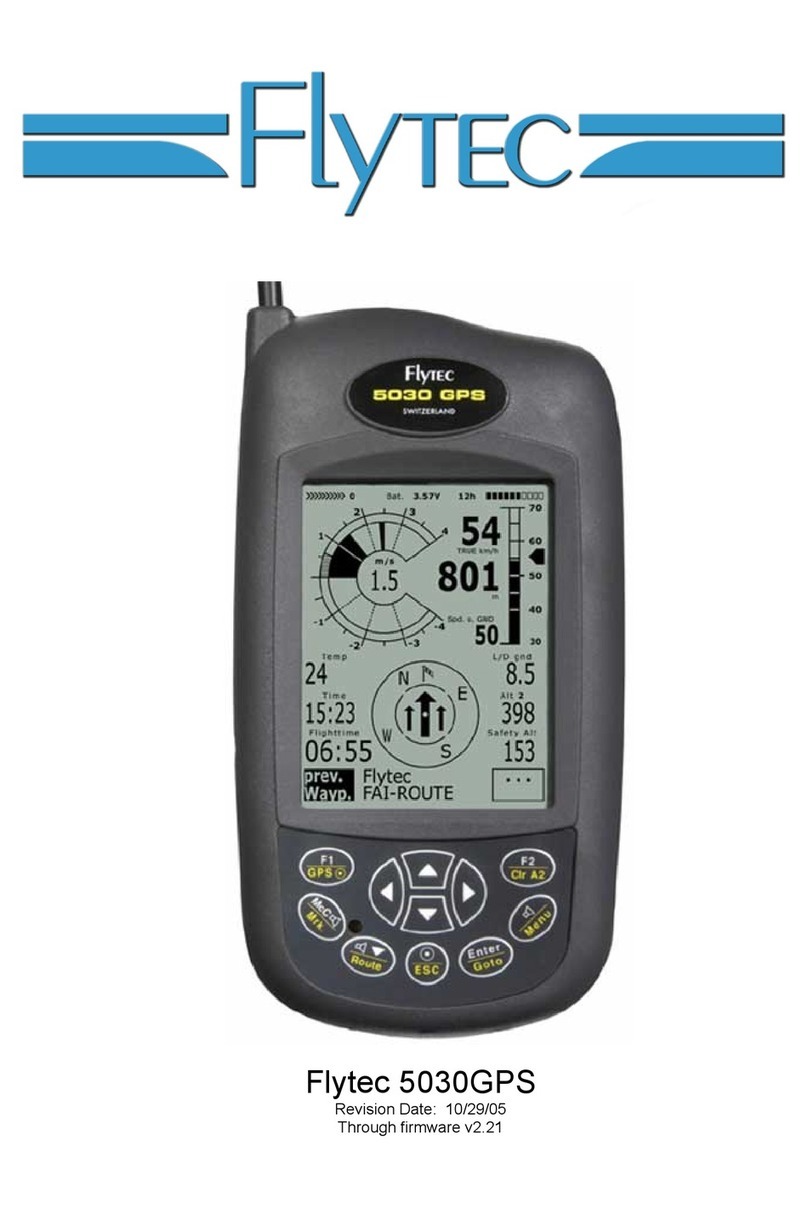
Flytec
Flytec 5030 GPS User manual
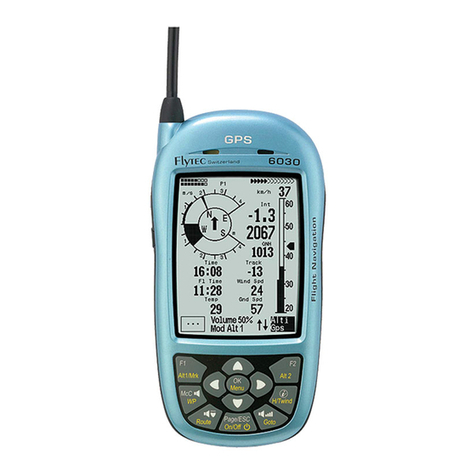
Flytec
Flytec 6030 User manual
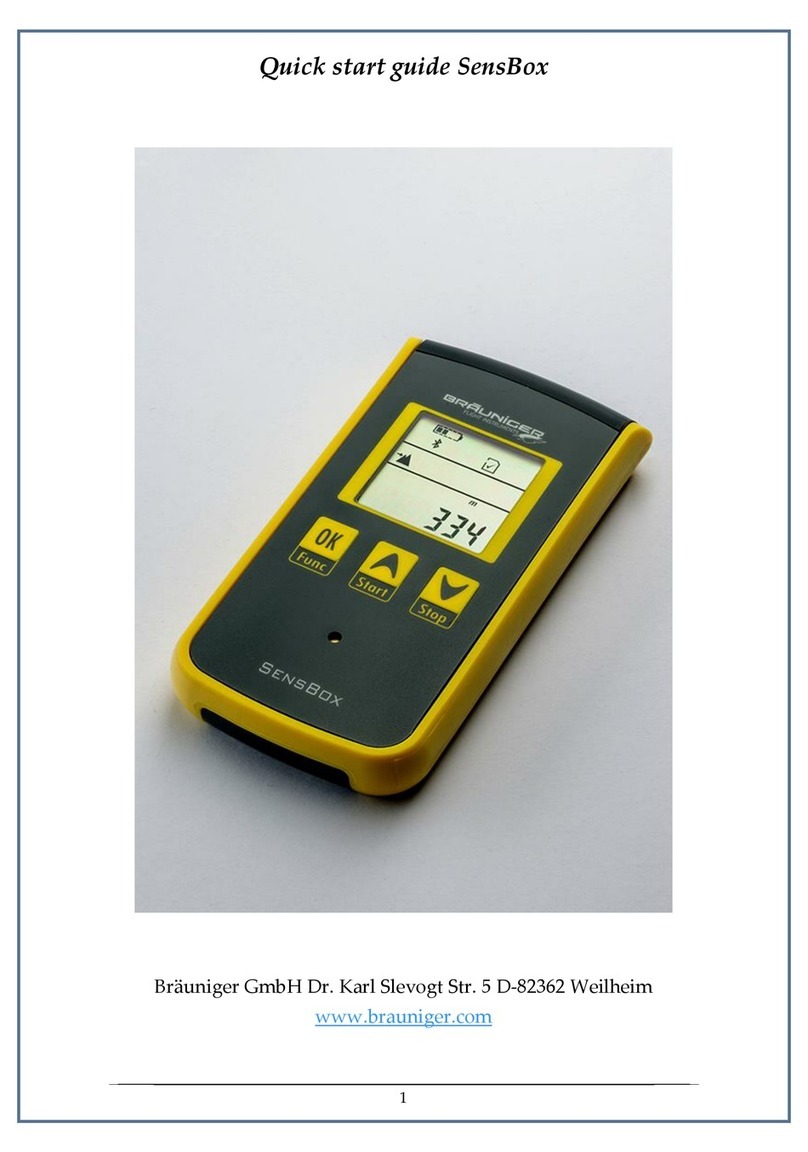
Flytec
Flytec SensBox User manual
